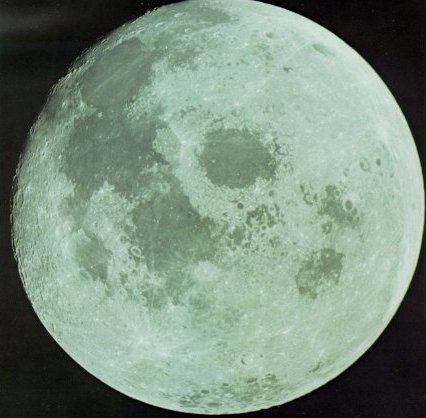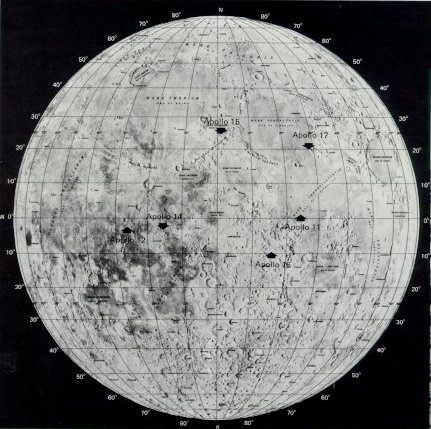Apollo Expeditions to the Moon
A NEW VIEW OF THE MOON
What will historians write many years from now about the
Apollo expeditions to the Moon? Perhaps they will note that it
was a technological leap not undertaken under the threat of war;
competition, yes, but not war. Surely they will say that Apollo
marked man's evolution into the solar system, an evolution no
longer marked by the slow rates of biological change, but from
then paced only by his intellect and collective will. Finally, I
believe that they will record that it was then that men first
acquired an understanding of a second planet.
What then is the nature of this understanding, and how did
the visits of Apollo 15, 16, and 17 to Hadley-Apennines,
Descartes, and Taurus-Littrow relate to it?
The origins of the Moon and the Earth remain obscure,
although the boundaries of possibility are now much more limited.
The details of the silicate chemistry of the rocks of the Moon
and Earth now make us reasonably confident that these familiar
bodies were formed about 4.6 billion years ago in about the same
part of the youthful solar system. However, the two bodies
evolved separately.
| | |
Landing sites for the great voyages of exploration,
Apollos 15, 16, and 17, were chosen primarily to
expand knowledge of light-colored highland areas,
and the ancient crust of the Moon that is 4.5 billion
years old. Choices of Hadley-Appennines for 15,
Descartes for 16, and Taurus-Littrow for 17 were
compromises between this goal and constraints imposed
by availability of high-quality imagery for planning,
ideal distribution of geophysical instruments, landing
safety considerations, and propulsive energy of the
Apollo/Saturn system. Note that later missions were not
targeted so closely to the equator. Full-Moon photo here,
taken from space, is not precisely congruent with the
projection used in the chart.
|
As many scientists now view the results of our Apollo
studies, the Moon, once formed, evolved through six major phases.
Of great future importance is the strong possibility that the
first five of these phases also occurred on Earth, although other
processes have obscured their effects. Thus, the Moon appears to
be an ever more open window into our past.
The known phases of lunar evolution are as follows:
- The existence of a melted shell from about 4.6 to 4.4
billion years ago.
- Bombardment to form the cratered highlands from about 4.4
to 4.1 billion years ago.
- The creation of the large basins from about 4.1 to 3.9
billion years ago.
- A brief period of formation of light-colored plains about
3.9 billion years ago.
- The eruption of the basaltic maria from about 3.8 to
about 3.1 billion years ago.
- The gradual transition to a quiet crust from about 3.0
billion years ago until the present.
The detail by which we understand these six phases of lunar
evolution is quite great. It derives from analysis of returned
samples and observations of their geologic setting on the Moon,
from the interpretation of geophysical and geochemical data from
stations that still operate on the Moon or that previously
operated in lunar orbit, and from our experience on Earth.
| | |
Field camps on the Moon created by the last three LMs were provisioned
with oxygen, water, food, and power for about 70 hours plus some
reserves. The Rover had battery power sufficient for about 55 miles,
although 22 miles was the most that one was driven. Here Gene Cernan
prepares the Rover for our second day of work on Apollo 17. The weird
vehicle below is test vehicle for a Mobile Laboratory, a super-rover
that never was built.
|
During the melted shell phase from about 4.6 to 4.4 billion
years ago, at least the outer 200 miles of the Moon was molten or
partially molten. As this shell cooled, the formation and
settling of crystals of differing composition resulted in the
creation of major chemical differences between various layers
tens to hundreds of miles thick. A crust, mantle, and core
apparently were formed at this time. The crust consisted of
light-colored minerals rich in calcium and aluminum (largely the
mineral plagioclase); the mantle contained dark minerals rich in
magnesium and iron (largely the minerals pyroxene and olivine);
and the core probably was composed of dense, molten material rich
in iron and sulfur.
|




